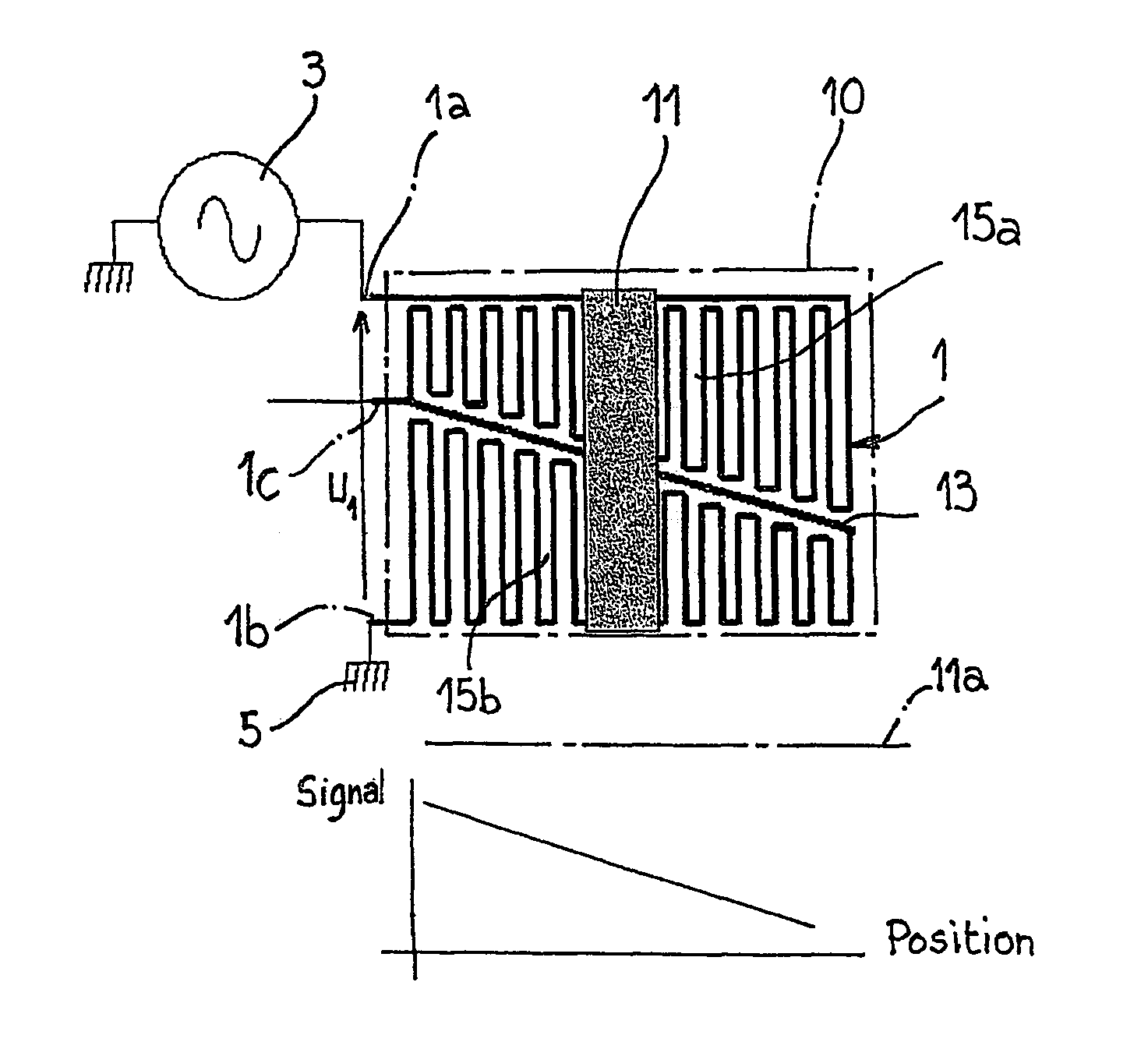Use of magneto-impedance on a contactless position sensor and corresponding sensor
a technology of contactless position sensor and magneto-impedance, which is applied in the direction of converting sensor output, magnitude/direction of magnetic field, measurement device, etc., can solve the problem of high cost imposed
- Summary
- Abstract
- Description
- Claims
- Application Information
AI Technical Summary
Benefits of technology
Problems solved by technology
Method used
Image
Examples
Embodiment Construction
[0060]The object of the approach here is therefore a priori not to make an exact quantitative measurement (a measurement of the external magnetic field as was the case with GMI sensors).
[0061]In what follows, it will be moreover considered that the physical characteristic of the electrical conductor 1, in the sensitive area 10 subjected to the effect of the magnet, which has to vary in order to allow the magnetoimpedance (or RMS) phenomenon to be used, is the impedance, and in particular the resistance R, of this conductor at the stimulation frequency.
[0062]Before specifically dealing with the figures, it should also be noted that the position sensor of the invention, therefore favorably based on the variation in resistance R of an electrical conductor, in particular made of a paramagnetic or ferromagnetic material, and subjected to an AC voltage of frequency f, is in general described as follows:[0063]a permanent magnet, generating a known magnetic field, is moved opposite the elec...
PUM
 Login to View More
Login to View More Abstract
Description
Claims
Application Information
 Login to View More
Login to View More - R&D
- Intellectual Property
- Life Sciences
- Materials
- Tech Scout
- Unparalleled Data Quality
- Higher Quality Content
- 60% Fewer Hallucinations
Browse by: Latest US Patents, China's latest patents, Technical Efficacy Thesaurus, Application Domain, Technology Topic, Popular Technical Reports.
© 2025 PatSnap. All rights reserved.Legal|Privacy policy|Modern Slavery Act Transparency Statement|Sitemap|About US| Contact US: help@patsnap.com



